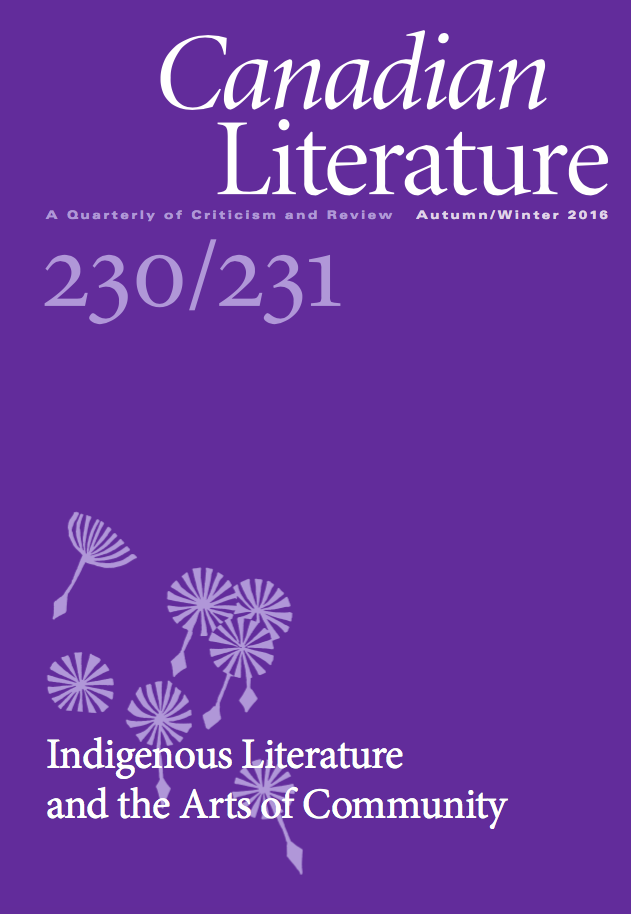Leanne Betasamosake Simpson’s Decolonial Aesthetics: “Leaks”/Leaks, Storytelling, Community, and Collaboration
DOI:
https://doi.org/10.14288/cl.v0i230-1.188363Abstract
In Centering Anishinaabeg Studies: Understanding the World through Stories (2013), Jill Doerfler, Niigaan Sinclair and Heidi Stark state that stories are “being used as theoretical frameworks guiding questions” in a number of fields. Anishinaabeg scholars have been “exploring issues and interests of their own communities” in ways that reveal “stories operating as different entryways . . . [and as] centres to Anishinaabeg Studies.” Doerfler et al note that in Leanne Simpson’s contribution to their volume, she approaches aadizookanaag and dibaajimowinan as “two types of stories” that reflect “interrelated forces, echoes, and parts of a greater whole.” Simpson’s poem “leaks” – like Cara Mumford’s short film Leaks – also reflect this approach. The performance of “Leaks” in the film Leaks is consistent with “spontaneous” resurgent eruptions of flash round dances associated with Idle No More; long-standing “grass-roots” forms of cultural, political and spiritual resistance; “traditional,” land-based Indigenous knowledge, language and spirituality; and contemporary Indigenous literary theory. My own reading of the poem views it as embodying new kinds of conversations between Anishinaabeg artists, but also between writers from different First Nations as well as between Indigenous and settler readers and critics.


